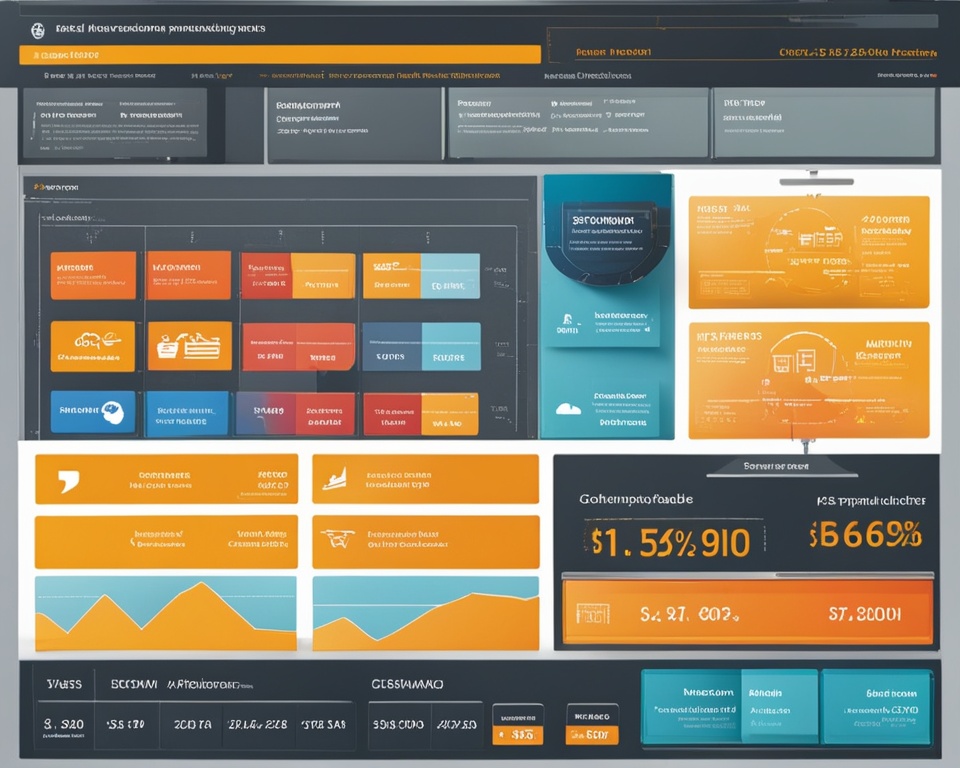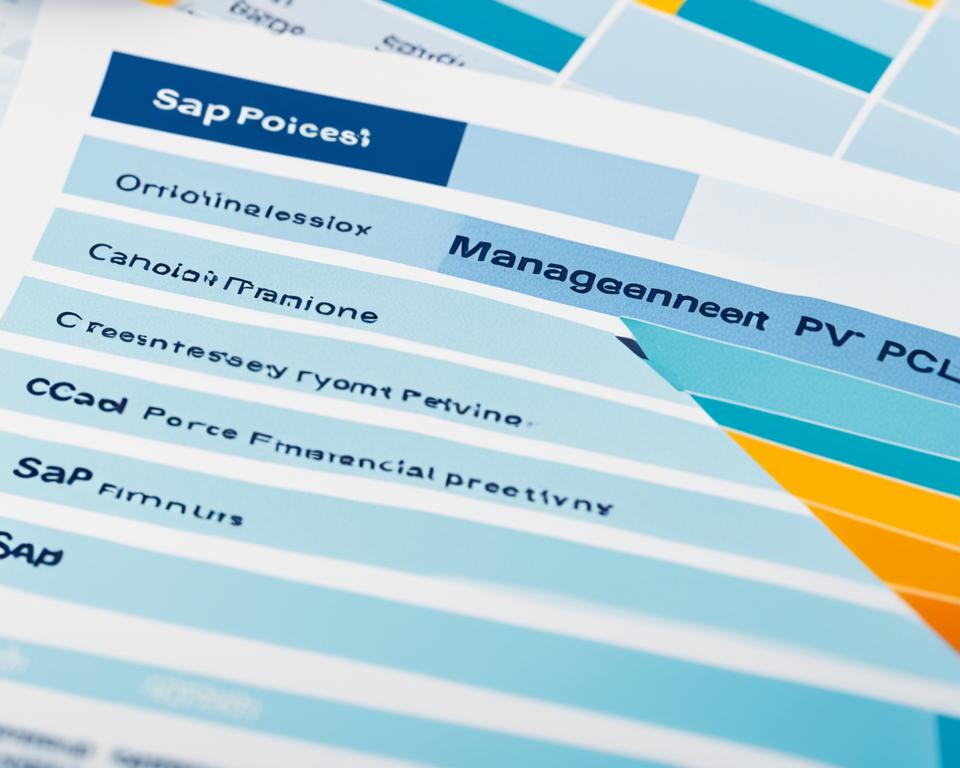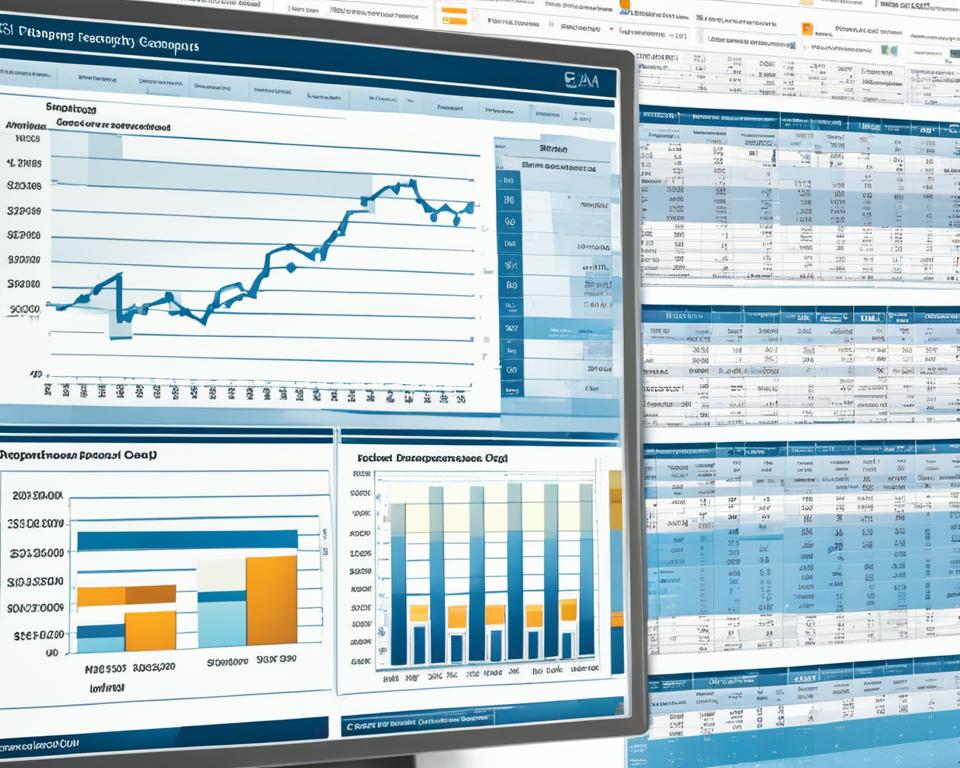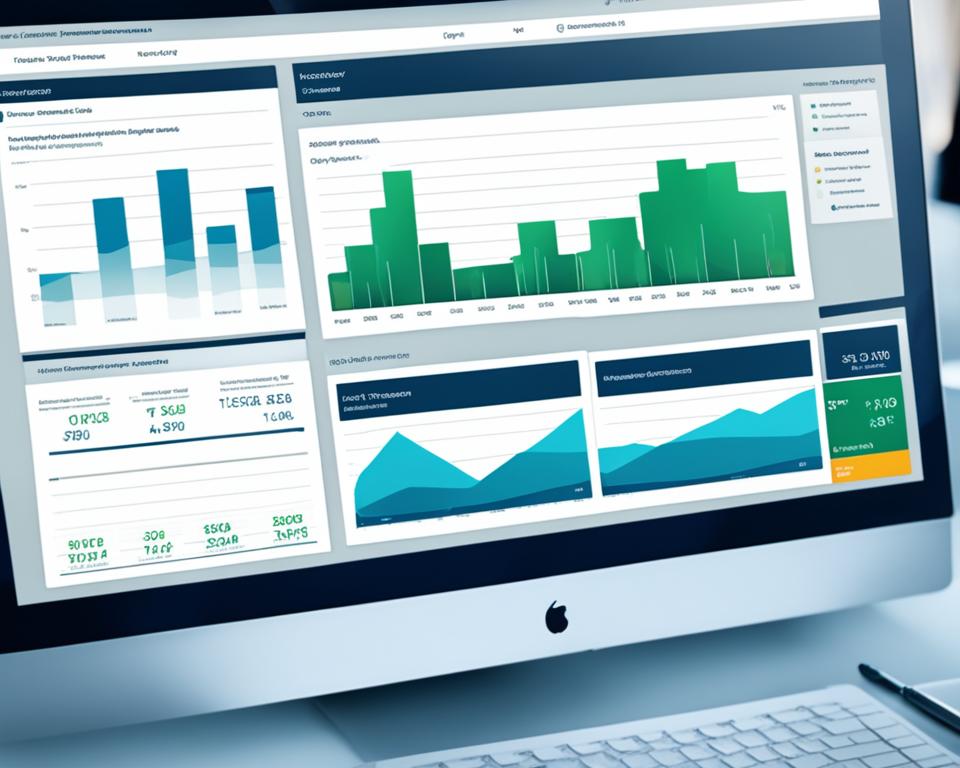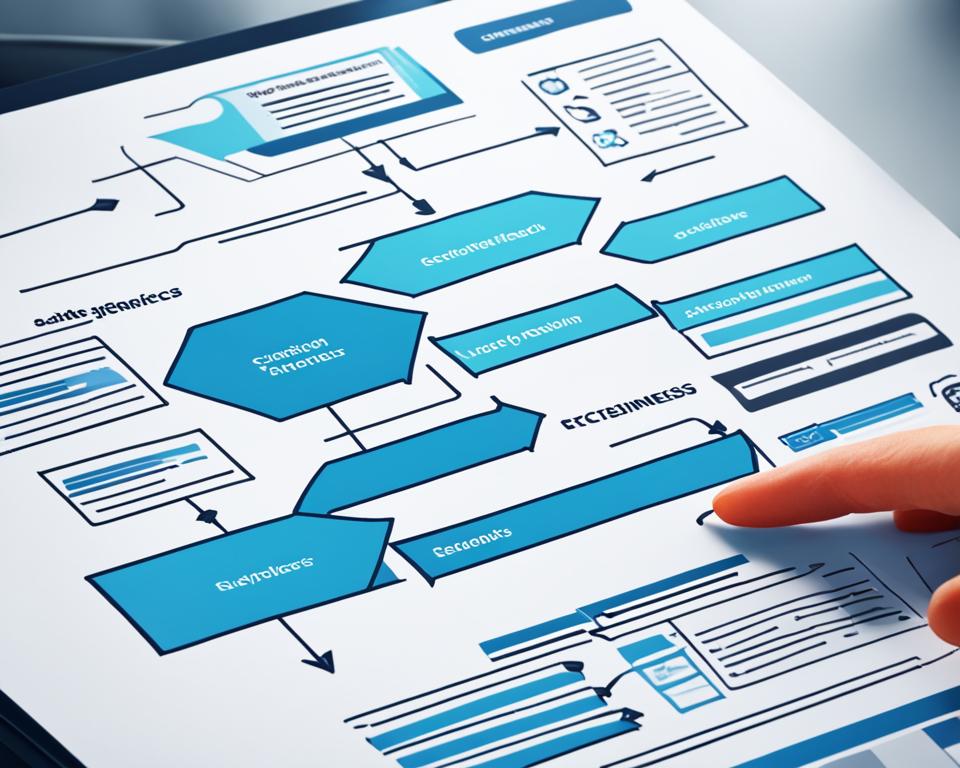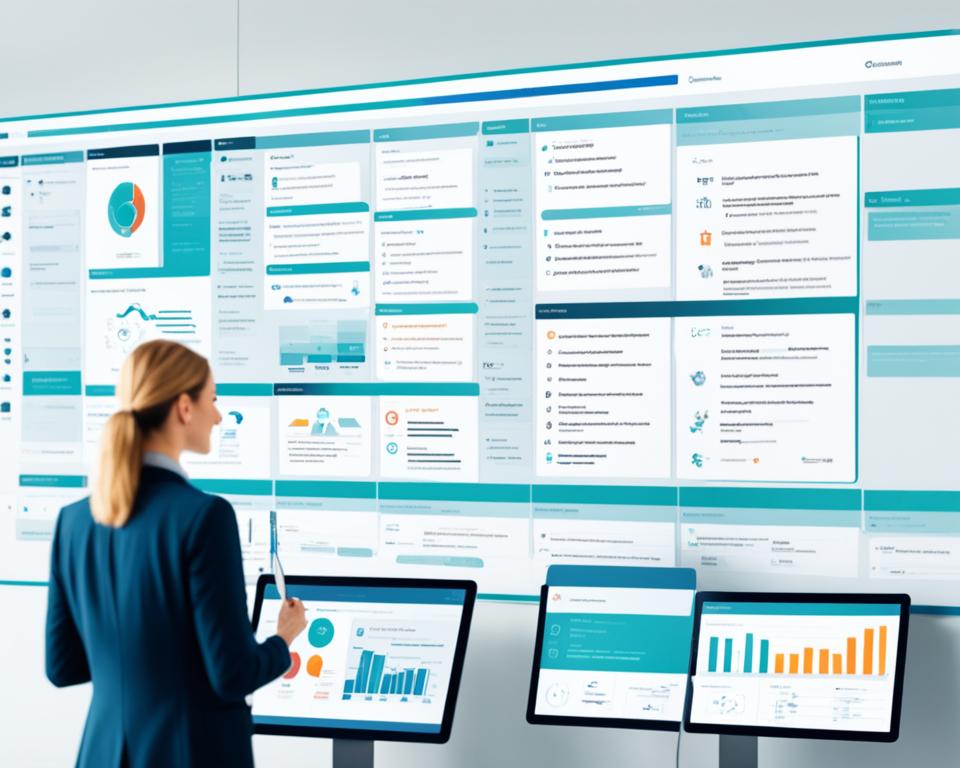Ever wondered how companies stay ahead in product development? In today’s fast market, mastering SAP PD is key. This guide will shed light on SAP PD and its vital role in business strategies.
SAP PD helps companies improve their product development, boost teamwork, and increase efficiency. By using smart product lifecycle management, businesses can manage their products better. They can also cut costs and improve R&D strategies. Let’s dive into actionable tips and strategies for SAP PD, helping your business succeed in a tough market.
Key Takeaways
- Understanding the significance of SAP PD in modern business.
- The importance of effective product lifecycle management.
- Strategies for enhancing R&D through SAP PD.
- Best practices for optimizing portfolio costs.
- Insights into maximizing collaboration in product development.
Understanding SAP PD and Its Importance
I’ve learned that SAP PD is key for product development. It helps companies manage their products from start to launch. It’s vital for innovation, being ready for the market, and success over time.
Using SAP PD strategies makes businesses run smoother. It helps teams work better together and follow industry rules. This method speeds up getting products to market and helps teams work well together.
By linking product plans with company goals, businesses do better and meet market needs. This leads to better performance and success.
Tools like SAP Ariba bring big benefits to buying processes. Real examples show how these strategies lead to saving money and being more efficient. They also help build stronger ties with suppliers.
Companies that keep improving and going digital see big wins by using SAP PD. Integrating SAP PD is key to staying competitive and relevant.
In short, knowing SAP PD and its value is crucial for any business wanting to lead in today’s fast market.
The Role of Product Lifecycle Management in SAP PD
In the world of managing product development, Product Lifecycle Management (PLM) is key in the SAP PD lifecycle. It brings together people, processes, and technology. This helps companies manage each stage of a product’s life, from design to disposal.
PLM in SAP PD is great at managing data. It makes sure everyone, from engineers to marketers, has the latest info. This reduces mistakes and boosts teamwork. With all data in one place, companies work better and faster.
PLM also helps with following the rules. Today, products must meet strict standards. A good PLM system in SAP PD tracks and reports on these rules. This makes it easier for teams during audits and getting certified.
PLM’s collaboration tools help teams share ideas fast. This speeds up making new products and encourages creativity. It also keeps costs down. For better procurement, the Procure-to-Pay process shares tips that go well with PLM.
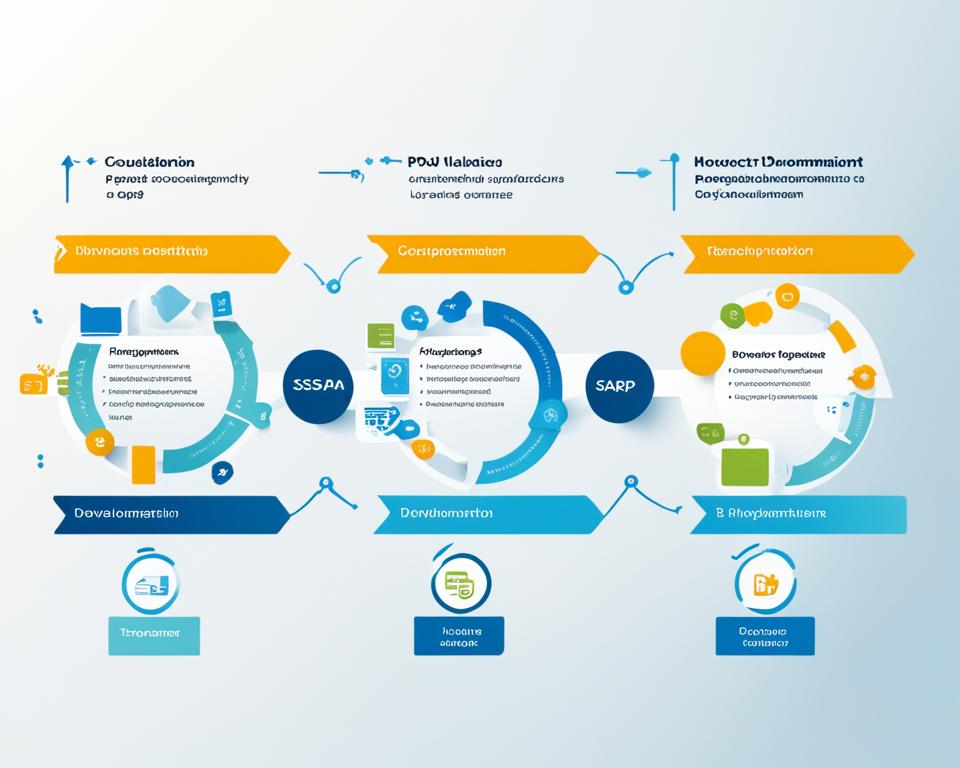
Research and Development Strategies for SAP PD
In my work with SAP PD research, I’ve learned that good R&D strategies are key to success. They boost innovation and make sure products meet customer needs. This is done through structured processes.
Using agile methodologies helps a lot in product development. It lets teams quickly respond to feedback and changes. This approach supports continuous improvement by adapting the project as we go.
Creating cross-discipline teams is also crucial. These teams mix different skills and ideas, leading to better collaboration and creativity. Everyone brings their unique view to the table, making the final product better.
It’s important to include customer feedback loops in the development process. Talking to customers at different stages gives us valuable insights. This helps us make the product better and meet market needs. By listening to customers, we can make sure we’re on the right track.
Building a strong R&D culture in my team matches SAP PD goals. This culture values innovation and taking risks. It creates an environment where everyone feels free to try new things. This way, we become more resilient and adaptable, which is key for product development.
| R&D Strategy | Description | Impact on Product Development |
|---|---|---|
| Agile Methodologies | Flexible and iterative development process | Faster adaptation to changes and feedback |
| Cross-Discipline Teams | Collaboration among diverse skills and expertise | Enhanced creativity and problem-solving |
| Customer Feedback Loops | Engagement of customers for insights | Better alignment with market needs and expectations |
| Strong R&D Culture | Encouragement of innovation and calculated risk-taking | Increased resilience and adaptability |
Leveraging Product Data Management in Your Workflow
Effective product data management is key in today’s business world, especially with SAP PD workflow. Companies that focus on managing product data see big improvements in accuracy and access during the product’s life. By using structured PDM processes, I make sure important info is always there for everyone, cutting down on mistakes from bad communication.
PDM in SAP PD boosts teamwork and makes workflows smoother. Team members from different departments can quickly get and share the latest product info. This leads to better decision-making. It’s crucial for following industry rules and handling product data well.

Strong product data management strategies bring many benefits, including:
- Enhanced Consistency: A single place for all data means everyone has the right info.
- Improved Collaboration: Teams work better when they share the same info easily.
- Regulatory Compliance: PDM keeps businesses in line with the law and lowers risk.
- Reduced Time on Manual Processes: Automating data entry lets teams focus on big projects.
To get the most from product data management, I suggest checking current workflows and finding ways to improve. Adding tools that work with systems like SAP Ariba can also help with buying and managing suppliers. These tools make getting materials and managing the supply chain better, helping businesses do well in the future.
| Benefit | Description |
|---|---|
| Enhanced Consistency | Centralized data prevents discrepancies and errors. |
| Improved Collaboration | Enables effective teamwork across various departments. |
| Regulatory Compliance | Keeps the organization aligned with industry standards. |
| Time Efficiency | Reduces time spent on administrative tasks. |
Engineering Change Management within SAP PD
Effective engineering change management is crucial in SAP PD processes. It’s important to manage product development changes well to keep products strong and competitive. ECM helps organizations handle complex changes smoothly.
Here are the key steps for engineering change management:
- Evaluating Change Requests: It’s vital to sort changes by their impact and if they can be done. We look at if changes are needed and if they fit with our goals.
- Implementing Changes: After approval, we put the changes into action carefully to avoid problems. Working together across departments is often needed.
- Communicating with Stakeholders: Keeping everyone updated on changes helps manage what people expect. It keeps teams working together well.
Using ECM in SAP PD makes us more responsive to what the market wants. Companies that focus on managing changes do better in making quality products. They also cut down on risks in product development.
| Step | Description | Benefits |
|---|---|---|
| Evaluating Change Requests | Assessing the impact and feasibility of proposed changes. | Ensures alignment with strategic goals. |
| Implementing Changes | Systematic execution of approved changes across departments. | Minimizes disruptions and enhances collaboration. |
| Communicating with Stakeholders | Keeping all parties informed about changes. | Manages expectations and fosters team alignment. |
Effective Project Portfolio Management Techniques
Effective project management in the SAP PD framework is key. It’s all about picking the right projects, using resources wisely, and making sure projects match business goals. These steps are crucial for success. They help improve project results and make the whole organization work better.
Using SAP PD techniques means picking projects carefully. I suggest setting clear goals for your organization. Look at how viable a project is, its risks, and how it could affect your earnings. Keeping track of progress with performance metrics helps make better decisions later on.
It’s also vital to keep stakeholders involved at every step. Talking regularly helps everyone understand the project’s goals. I think it’s good to have places where stakeholders can share their thoughts. This makes them feel important and heard in the project’s management.

Here’s a table that shows some key strategies for managing projects and their benefits:
| Strategy | Benefits |
|---|---|
| Establish Clear Criteria for Project Selection | Ensures alignment with business objectives, prioritizes high-impact projects. |
| Utilize Performance Metrics | Tracks progress, provides data for informed decision-making throughout managing projects. |
| Enhance Stakeholder Engagement | Fosters collaboration, improves alignment, increases project buy-in. |
| Leverage Advanced Technologies | Enhances visibility, optimizes resource allocation, and streamlines processes. |
By using these strategies, organizations can handle the challenges of managing projects better. They ensure projects align with the big picture and lead to better results. For more on making procurement work better, check out SAP Ariba Modules. They offer great tools for improving procurement efficiency and more.
Conducting Cost Analysis in SAP PD
Managing costs well is key to staying profitable during product development. In SAP PD, I focus on key methods for figuring out costs and checking cost changes. Using SAP PD budgeting tools helps me keep track of and control expenses better.
Knowing what drives costs in product development helps companies make smart financial choices. Clear cost analysis leads to better product costs. This means using resources wisely and boosting profits.
- Estimate Costs: Use past data and trends for accurate cost forecasts.
- Analyze Cost Variances: Regularly check estimated costs against real costs to spot differences.
- Budgeting Tools: Use SAP PD budgeting tools for better financial control.
- Monitor Cost Drivers: Find and look at factors that greatly affect costs during product development.
The table below shows different cost parts in SAP PD budgeting:
| Cost Component | Description | Impact on Product Costs |
|---|---|---|
| Materials | Raw materials needed for making the product | Direct link to the product’s total cost |
| Labor | Wages and benefits for workers | Big effect on total development costs |
| Overhead | Indirect costs like utilities and admin | Key for a full cost view |
| R&D | Costs for research and product innovation | Very important for staying competitive and cost-effective in the long run |
With these tips, I can do a detailed cost analysis in SAP PD. This helps me make wise financial decisions. It ensures I optimize product costs and help product development succeed.
Portfolio Optimization for Successful Product Development
Portfolio optimization is key in making products successful. It’s important to match products with what the market wants and what customers like. This way, we can increase our chances of doing well.
One good way to optimize SAP PD is by making decisions based on data. By using important performance indicators, I can see how well our portfolios are doing. This helps spot what’s working and what’s not, so we can make smart changes.
To make our portfolios even better, I suggest trying these strategies:
- Do market research to find out what’s missing and what’s possible.
- Check how products are doing against certain standards regularly.
- Use customer feedback to make our products better.
- Use smart ways to share resources for better efficiency.
These steps help our product development match our company’s goals. They lead to big results. Using these portfolio optimization methods makes us more efficient and competitive.
Utilizing Variant Configuration to Enhance Product Development
In my work with SAP PD configurations, I’ve seen how variant configuration (VC) boosts product development. It helps manage complex product variations well. This lets us meet specific customer needs exactly.
VC makes the development process smoother. I can set up and manage many configurations in one product model. This cuts down on time. Instead of starting over for each customer, we can tweak the existing setup fast.
VC also makes customers happier. It lets us tailor products to what customers want, building stronger relationships. When used well in SAP PD, VC keeps production costs down while offering more products. It’s key for balancing customization with efficiency in product development.
Best Practices for Integrating SAP PD with Other Systems
Integrating SAP PD with other systems is key to better team performance and smooth data flow. I’ve found some top tips for SAP integration that boost efficiency and help in product development.
First, making data formats the same across all systems helps. This makes sure info moves between departments without trouble. It keeps product data consistent.
Using APIs is also crucial. APIs help different systems talk to each other and share data. This cuts down on manual work, lowers mistakes, and keeps data up-to-date.
Working together across departments is vital for good system integration. It lets team members from different areas share ideas and feedback. This helps spot problems and find ways to get better.
The following table outlines key strategies I recommend for integrating SAP PD:
| Strategy | Description | Benefits |
|---|---|---|
| Standardized Data Formats | Create uniform data formats for all systems involved. | Ensures data consistency and accuracy. |
| API Utilization | Implement APIs for efficient data exchange. | Reduces manual errors and enables real-time updates. |
| Cross-departmental Collaboration | Encourage communication between various teams. | Identifies integration challenges and uncovers solutions. |
| Regular System Audits | Conduct audits to assess integration performance. | Provides insights into improvements and adjustments needed. |
| Training and Support | Offer training sessions for employees on system integration tools. | Increases user confidence and efficiency in using SAP and related systems. |
By following these best practices for SAP, companies can make their SAP PD integration better. This creates a strong system for managing data and working together across all systems.
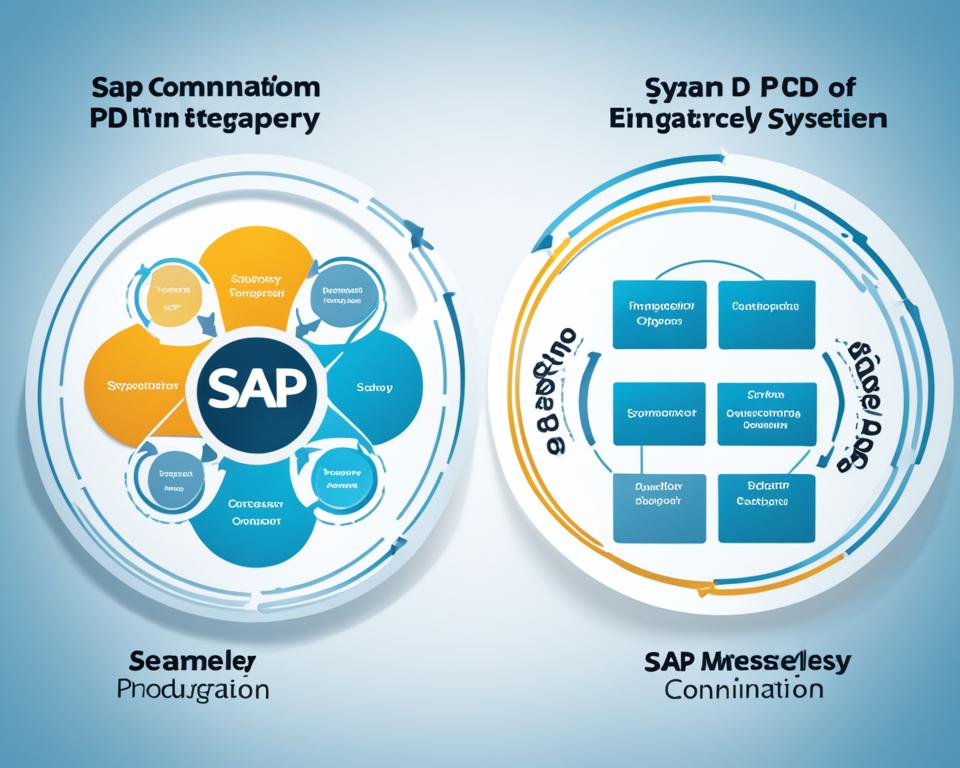
Case Studies: Successful Implementation of SAP PD
Looking into SAP PD case studies, many companies have shown how SAP PD helps them. They use it across different industries to tackle challenges and meet their goals.
A big name in the automotive world faced tough competition and needed to innovate fast. They used SAP PD to make their processes better. This led to better teamwork and faster new car models. It also meant they could make more money by getting to market quicker.
In the pharmaceutical field, a leading company was slow to bring new drugs to market. After using SAP PD, they cut their time to market a lot. These stories show how SAP PD can help overcome big challenges and improve profits.
- Emphasis on cross-functional teamwork.
- Investments in employee training on SAP systems.
- Establishment of clear performance metrics to track progress.
- Adaptation of agile methodologies within the product development cycle.
These steps led to better products and faster development. They offer lessons for other companies looking to improve their processes.
| Industry | Challenge | Solution Implemented | Outcome |
|---|---|---|---|
| Automotive | Delayed product launches | Streamlined workflows with SAP PD | Accelerated market entry |
| Pharmaceutical | Extended development timelines | Integrated SAP PD methodologies | Reduced time to market |
Common Challenges and Solutions in SAP PD
Organizations often face common challenges when using SAP PD. One big issue is resistance to change. Employees might be unsure or scared of losing their jobs with new systems. It’s key to build a culture that welcomes change with strong change management plans.
These plans should engage everyone, offer reassurance, and show the SAP PD’s long-term gains.
Another challenge is poor data management. Bad data can slow down decisions and hurt product quality. To fix this, set up data governance rules that focus on keeping data clean. Training staff on handling data well will also boost data quality.
Communication problems can also slow down SAP PD progress. If teams don’t talk well, they might do the same work twice or have different goals. Improving communication with regular meetings and updates can keep everyone aligned. By tackling these overcoming obstacles, teams can work better together towards their goals.
To make partnerships and procurement smoother, look into tools like Ariba Supplier Collaboration. These tools help manage supplier relationships well, fitting with SAP PD’s aims.
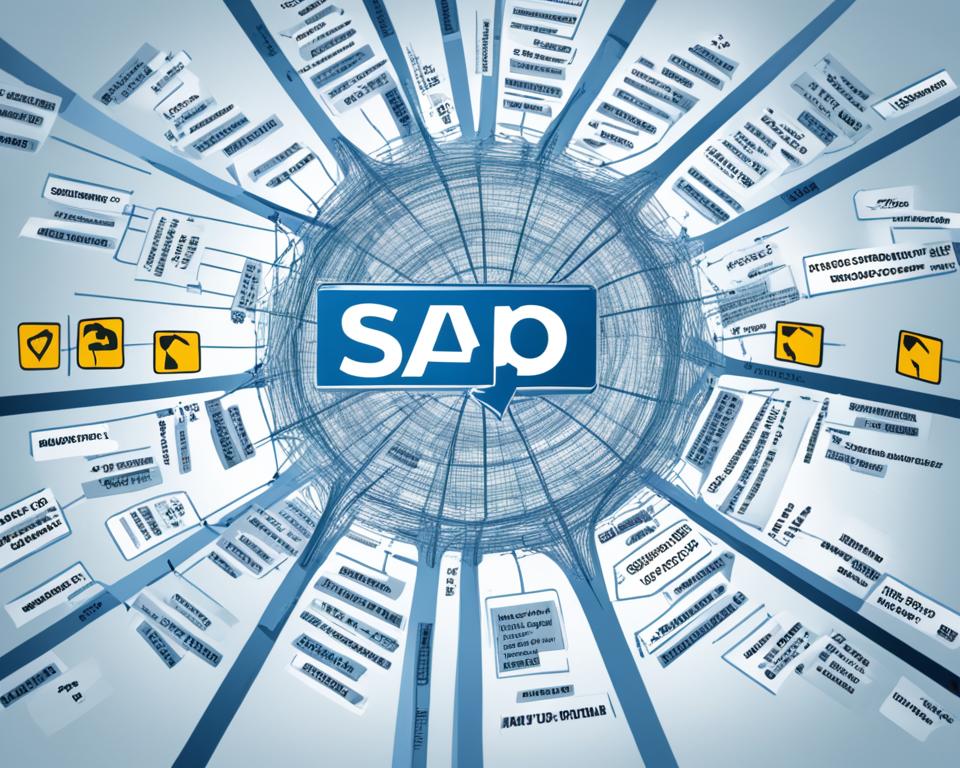
Conclusion
Effective product development is key to success for any organization. It involves research, engineering, and cost analysis. These steps help make workflows smoother and more efficient.
My final thoughts on SAP PD highlight the importance of always improving and adapting. By using the strategies shared, companies can improve their reporting and align product development with business goals. Today’s market demands a proactive approach, supported by strong systems like SAP.
If you want to learn more, check out resources on best practices for reports and data management. A great place to start is this guide on mastering ABAP reports. It offers valuable insights into the tools and techniques in the SAP world.
FAQ
What is SAP PD and why is it important for businesses?
SAP PD, or Product Development, helps streamline how products are made within a company. It’s key for boosting innovation, improving teamwork, and making sure products match what customers want while saving money. By using SAP PD, companies can better manage their products from start to finish, leading to better results and staying ahead in the market.
How does Product Lifecycle Management (PLM) factor into SAP PD?
PLM is a big part of SAP PD. It handles the whole life of a product, from the first idea to when it’s no longer used. PLM helps teams work together better, follows industry rules, and uses tools to cut down on mistakes. This makes the product development process more efficient and effective.
What role does research and development play in SAP PD?
Research and development (R&D) are key to SAP PD. They drive new ideas and make sure products meet customer needs. Using agile methods and teamwork in R&D is crucial for SAP PD. It helps companies quickly adapt to changes and encourages a culture of new ideas.
How can I leverage Product Data Management (PDM) within SAP PD?
Using Product Data Management (PDM) in SAP PD means keeping product data accurate and easy to get to. Good PDM cuts down on mistakes, keeps data the same, and follows rules. By using PDM, companies can make their work flow better and make better decisions.
What is Engineering Change Management (ECM) and its relevance to SAP PD?
Engineering Change Management (ECM) is vital in SAP PD. It helps manage changes in making products well. ECM looks at change requests, makes changes, and talks to stakeholders. This keeps products up to quality and competitive while lowering risks from changes.
What techniques can enhance Project Portfolio Management (PPM) in SAP PD?
Good PPM techniques include picking which projects to do, lining up development with business goals, and using metrics. A clear way of choosing projects and keeping stakeholders involved helps align with strategies and improves project results in SAP PD.
How do I conduct a thorough cost analysis in the context of SAP PD?
Doing a cost analysis in SAP PD means figuring out costs, looking at differences, and using SAP tools for budgeting. Knowing what affects costs helps companies use resources well, make smart financial choices, and stay profitable in making products.
What is portfolio optimization, and why is it significant for product development?
Portfolio optimization matches product portfolios with what the market wants and what the company can do. It’s important because it helps check how well the portfolio is doing and makes choices based on data. This improves the product strategy, uses resources better, and keeps companies competitive.
How does Variant Configuration (VC) improve product development in SAP PD?
Variant Configuration (VC) makes managing different product versions for customers easier in SAP PD. This leads to faster production, happier customers, and keeps costs down. By using VC, companies can make products better and keep production costs low.
What are best practices for integrating SAP PD with other systems?
Best practices for SAP PD integration include making data formats the same, using APIs, and teamwork across departments. This makes sure information flows well and gives product development teams the info they need. It makes SAP PD more valuable.
Can you share examples of successful implementations of SAP PD?
Many companies have made SAP PD work well, improving teamwork, innovation, and profits. By looking at real examples, we can see how SAP PD has helped companies succeed.
What common challenges do organizations face when implementing SAP PD?
Companies often face challenges like not wanting to change and poor data handling when starting SAP PD. By tackling these issues with change management, training, and better communication, companies can overcome these hurdles. This leads to better product development processes.




